(TITC) - Kon Tum Province is located at the "Indochina crossroads" with many famous attractions such as Mang Den, Wooden Church, the largest communal house in the Central Highlands, and Ngoc Linh Mountain, etc.
Kon Tum is located in the north of the Central Highlands region, bordering Quang Nam, Gia Lai and Quang Ngai provinces (Vietnam), Sekong and Attapeu provinces of Laos, and Ratanakiri Province of Cambodia.
Kon Tum has a typical climate of the Central Highlands, with two distinct seasons: rainy and dry seasons. The rainy season usually starts from April to November, the dry season from December to March of the following year. Each season, Kon Tum attracts tourists with its own beauty. January is the season of rubber leaves changing, March and April begin the coffee flower season, November is the season of wild sunflowers and at the end of the year is cherry blossoms, which is also the season of many traditional festivals.
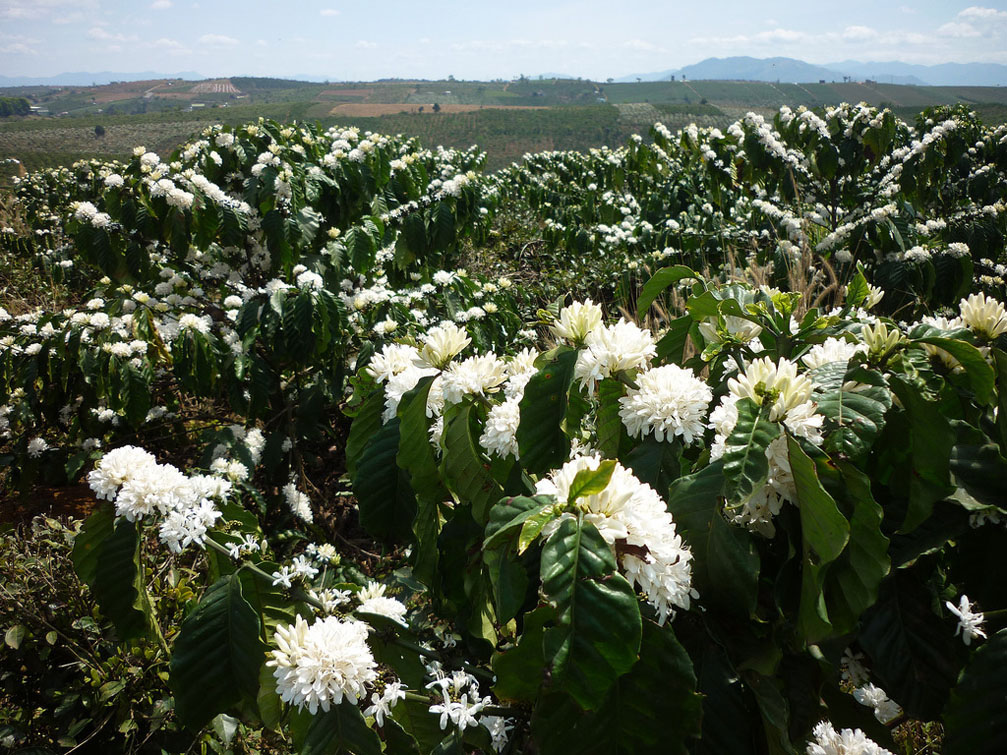
Coffee flowers bloom in Dak Ha District in late March and early April. Photo: Dak Ha District People's Committee
Transport
Kon Tum does not have an airport. The nearest airport is Pleiku (Gia Lai), about 45 km from Kon Tum City. Travel time by car is about 1 hour.
From Pleiku airport, visitors can choose a bus to travel to Kon Tum, or taxi as an alternative.
Sleeper buses run the Ho Chi Minh City - Kon Tum route, about 550 km, price will be varied. Travel time is from 10 to 12 hours.
Accommodation
Kon Tum has many hotels with a relatively large number of rooms, though most are small budget hotels or homestays.
In Kon Tum City, visitors can choose Hoang Van Hotel, Tay Nguyen Hotel, Konklor Hotel, Window Hotel (1 and 2), and some other hotels available on booking websites.
In Mang Den town, there is only one large hotel, Golden Boutique Hotel. In addition, Mang Den has many smaller hotels and homestays
Places to visit
Wooden church
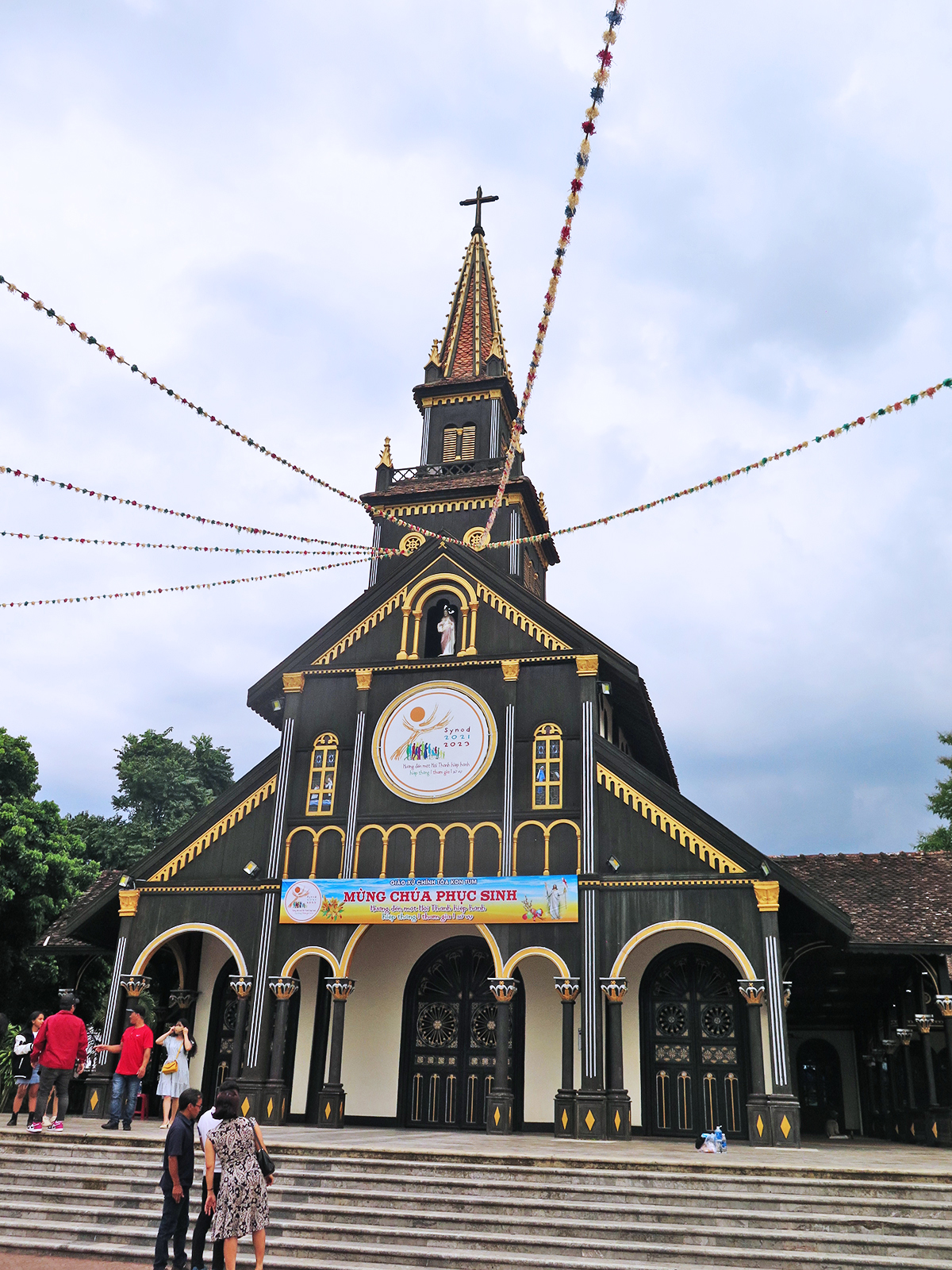
Photo: TITC
The Church (also known as the Wooden Church) was built according to Roman architecture combined with the traditional house-on-stilt style of the Ba Na people. The church was started in construction in 1913 and completed in early 1918. The building is entirely made of Shorea roxburghii C. Donwood, the walls are made of soil mixed with straw, no reinforced concrete is used. Inside the church, there are many small rows of columns linked by wooden arcs to form arches supporting the windows above. The cathedral has stained glass panels depicting biblical stories and stories that represent the spirit of the Central Highlands people.
Kon Tum Bishopric
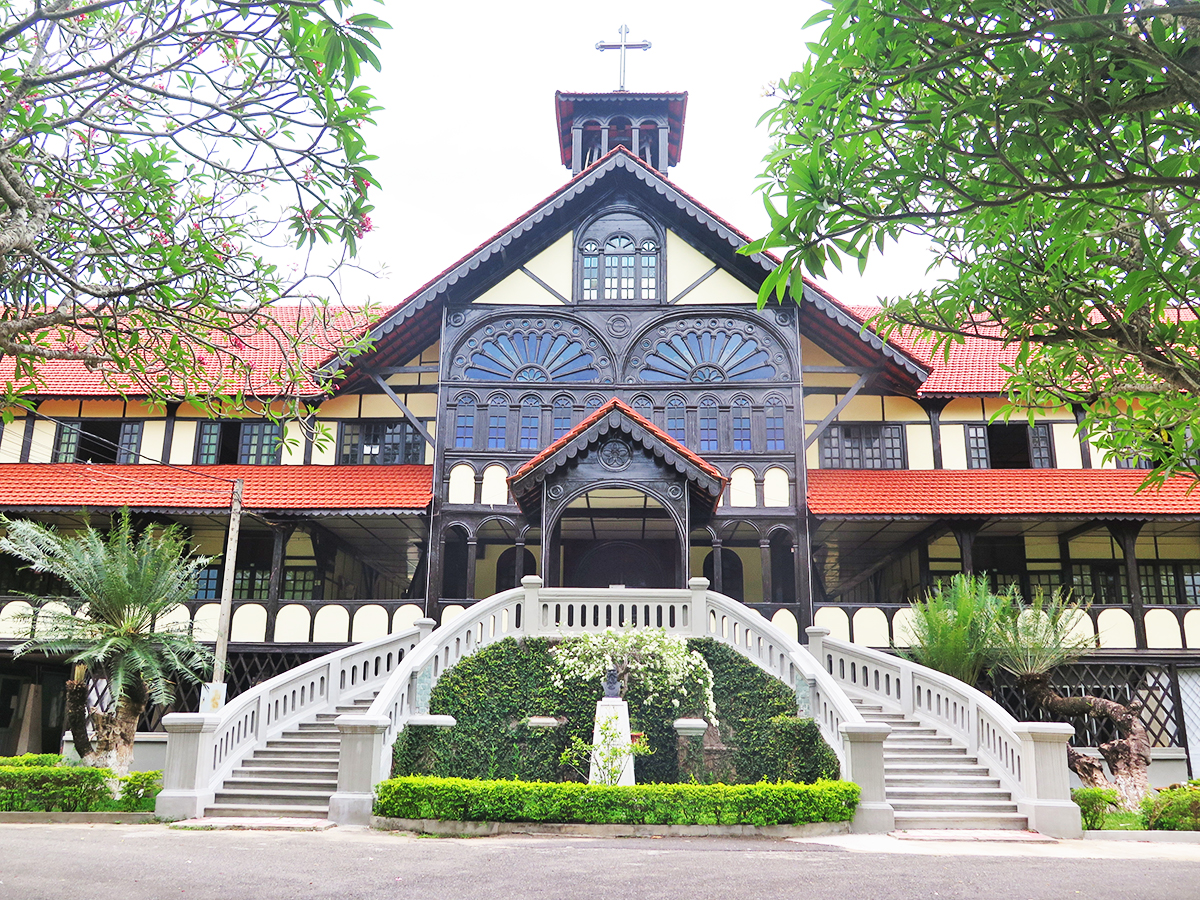
Photo: TITC
The bishop's palace was built in 1935, a combination of traditional indigenous architecture and Western architecture. Except for the pillars under the floor which are built of reinforced cement, the rest of the building is made from precious, highly durable woods. In particular, there is a traditional house here that is considered a small museum of daily life items, agricultural tools, and cultural objects of ethnic groups living in the area. Kon Tum Bishop's Palace is closed on Tuesdays, the remaining days of the week are open to visitors.
Indochina junction
The three-country border junction of Vietnam - Laos - Cambodia is also known as the Indochina Junction in Bo Y international border gate area, Ngoc Hoi District. 3 km from the Indochina junction is a triangular landmark, each side has the names and national emblems of three countries. The landmark is located on a 1,086 m high hill, about 15 km from Plei Kan Town, Ngoc Hoi District and 75 km from Kon Tum City. This is one of the tourist attractions to check in when coming to Kon Tum.
Bo Y international border gate
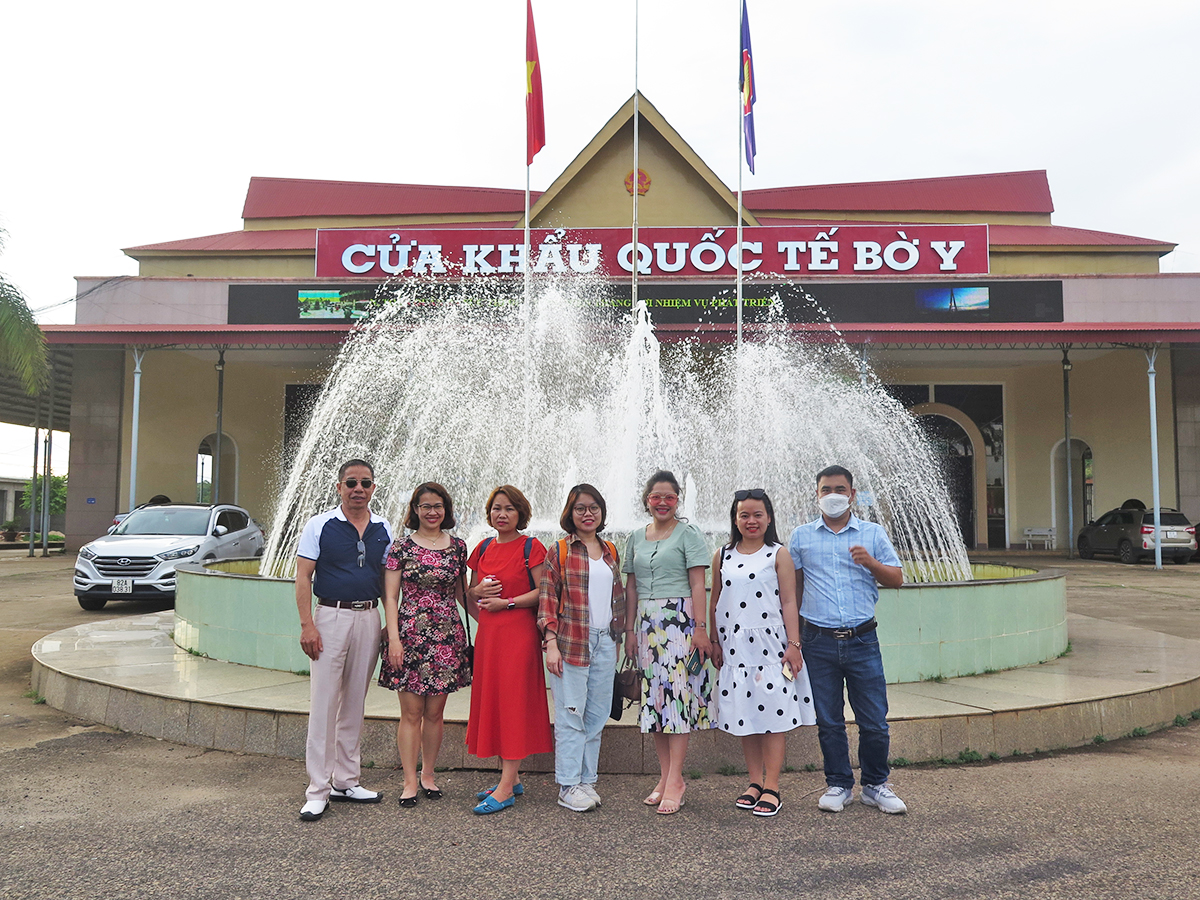
Photo: TITC
Bo Y international border gate is the central area in the border triangle of three countries Vietnam - Laos - Cambodia. This is also a tourist attraction for many tourists. Border gate opening time is from 7:00 a.m. to 7:30 p.m. daily (including Saturdays, Sundays and holidays). The border gate area is divided into many areas with separate functions such as cultural villages, residential areas, and sightseeing places. Visitors can come here to check in and visit for free.
Mang Den Town

Photo: TITC
Mang Den is a small town, with an area of nearly 150 km2 on the plateau of Kon Plong District, about 60 km from Kon Tum City. Mang Den is well-known for primaeval forests, lakes, waterfalls, pine forests, fresh cool climate, and peaceful space. The most crowded time in Mang Den is from October to December every year, the weather is cold, dry, and cherry blossoms are in full bloom. Coming here in February, visitors will see mimosa flowers and banyan flowers, and in March or April there will be purple poinciana.
Dak Bla River
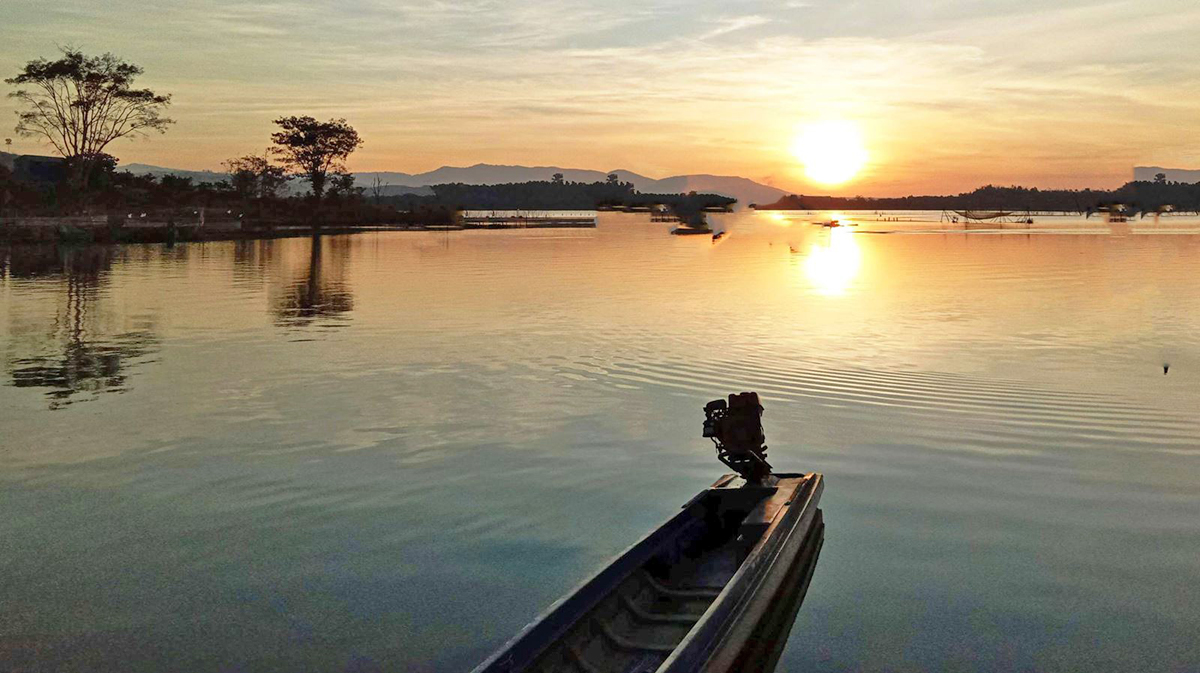
Photo: http://kkt.kontum.gov.vn/
Dak Bla River is not only a source of water and silt for local agricultural production but also a beautiful scene and tourist destination in Kon Tum City. The river is 137 km long, originating from the foot of Ngoc Linh mountain, flowing across the city. When it reaches Gia Lai, it merges with the Ia Grai River to form the famous Se San river in the Central Highlands. This is an ideal place for visitors to watch the sunrise or sunset. Along both banks of the river there are flower gardens and entertainment areas for tourists. In addition, there is also a sightseeing boat service on the river.
Kon Klor suspension bridge
Kon Klor suspension bridge connects the two banks of Dak Bla River. From the bridge, visitors can see the surrounding villages, rice fields, corn fields, sugar cane fields and small creeks flowing under the bridge. Here is the Ba Na - Kon Klor ethnic village, where visitors can drink wine with the people, then cross the river over a suspension bridge to reach a rich alluvial land with banana gardens, coffee gardens and other fruit trees. Kon K'tu village is also in this area, still retaining many traditional features of the Ba Na people, activities and pristine natural scenery.
Ngoc Linh Mountain
Located at an altitude of about 2,600m, Ngoc Linh Mountain is poetic and majestic. The mountain contains many spiritual values from generations of ethnic minorities here. Characterised by a tropical climate, fog surrounding the Ngoc Linh Mountain range creates a magical space. In particular, there are many precious types of Ngoc Linh ginseng growing in this mountain range.
The largest communal house in the Central Highlands
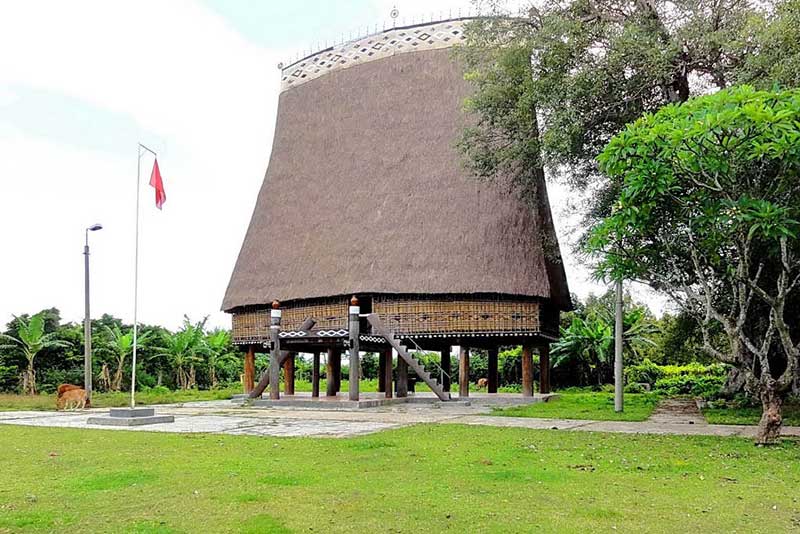
Kon Klor communal house is the largest in the Central Highlands. Photo: http://kkt.kontum.gov.vn/
Kon Klor communal house is located on Tran Hung Dao Street. To the right of the communal house is the Kon Klor suspension bridge and green sugarcane fields. Communal houses are built in the traditional style with materials of wood, bamboo, thatch, thatched roofs and ornate motifs and patterns. Artisans and villagers of Kon Klor have collaborated to preserve the unique features of the communal house. Kon Klor communal house is considered a characteristic of the village soul, and is also the pride of Ba Na artisans and people.
Chu Mom Ray National Park
Chu Mom Ray National Park is located in Ngoc Hoi and Sa Thay districts, about 30 km from Kon Tum City. Among the national parks in Vietnam, Chu Mom Ray has high biodiversity. Besides, this place is also the living area of the Ro Mam, K'Dong, Gia Rai, H'Lang and especially the Bo Rau ethnic groups, one of the smallest ethnic groups in Vietnam. Chu Mom Ray National Park is a favourite destination for tourists who love to explore, expedition and research groups. Travelling to the national park is quite convenient by personal car or bus from the city.
Specialties
Leaf salad
This can be considered a specialty not to be missed when coming to Kon Tum. In the dry season, leaf salad only has about 30-40 types of forest leaves. When the rainy season comes, the leaf salad will have at least 70 types, and it is even estimated that if it is adequate, there must be no less than 100 types of leaves. Leaf salad served with boiled meat, shrimp, and pork skin. The special dipping sauce of leaf salad is made from a mixture of fermented sticky rice, brewed with dried shrimp and pork belly, and has a rich, light yellow colour.
Grilled chicken - lam rice
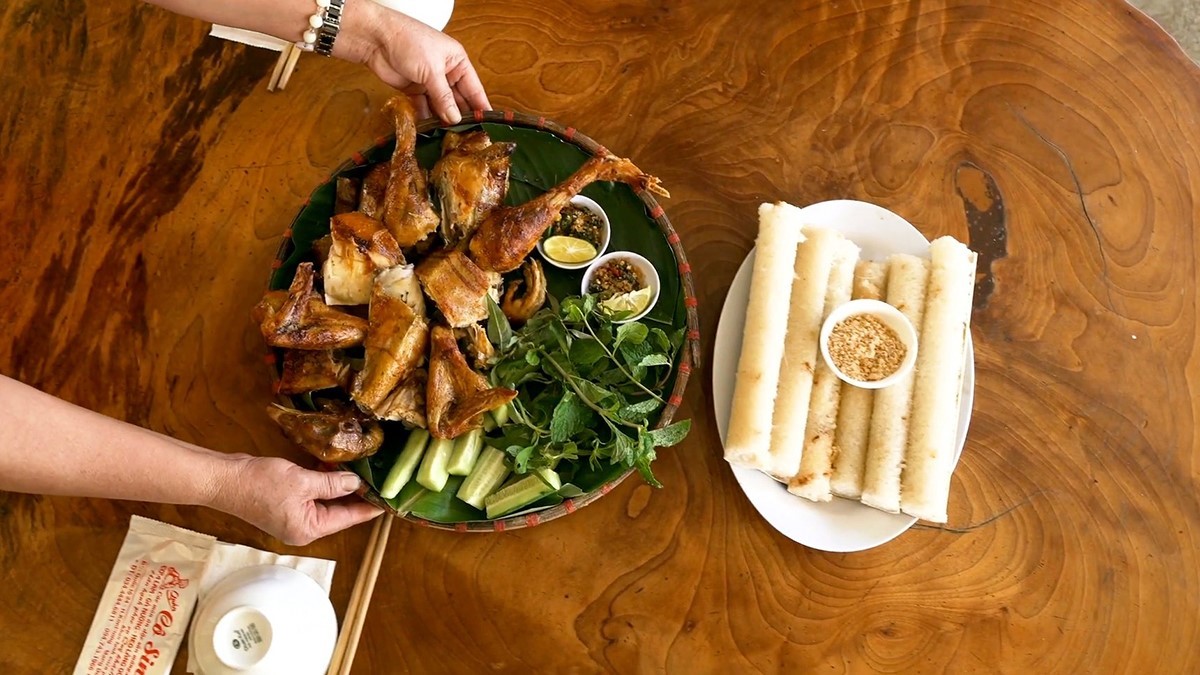
(Image from Clip Live fully in Vietnam)
This is a traditional local dish. Chickens are often raised naturally so the meat is firm. Before grilling, the chicken is stuffed with wild pepper leaves, onions, lemongrass, and chilli, so it is fragrant when cooked. The charcoal stove for grilling must be flaming hot, each batch takes about 20 to 30 minutes. Grilled chicken is best when eaten while still hot, the skin is crispy, golden brown, and the meat is fragrant. Grilled chicken is often served with sticky rice, peanut salt or sesame.
Red vermicelli noodles
Coming to the Central Highlands in general or Kon Tum in particular, visitors should try red vermicelli. The dish has a unique way of preparation that you can hardly find anywhere else in Vietnam. A bowl of red vermicelli usually includes the main ingredients of crab, meatballs and boiled quail eggs. The name red vermicelli comes from the colour of the vermicelli. The vermicelli are initially white, but after being cooked in a pot of broth, absorbing spices, cashew colour, and shrimp colour, they become red, bearing the mark of the basalt land. The dish is available in luxury restaurants or popular roadside stalls.
Xuyen Tieu hot pot (Pepper-piercing hot pot)
The name of the dish already sounds spicy, still thanks to that, it is suitable for the climate of Mang Den. The hot pot broth is stewed from vegetables and fruits, with herbs such as goji berries and red apples. The broth is stewed for many hours to create a naturally sweet and clear taste. Xuyen Tieu hot pot is served in a similar form to Sichuan hot pot, divided into two compartments with two different flavours, one of which is spicy and one is plain. To best feel the delicious taste of the dish, diners should try the spicy hot pot.
Bamboo shoots sticky rice
To make sticky rice with bamboo shoots, people will first soak sticky rice with turmeric powder for many hours. When the sticky rice is cooked, it will have an eye-catching yellow colour. Sticky rice is served with stir-fried bamboo shoots, boiled bamboo shoots, salt, sesame or braised meat.
Notes
The road to Mang Den is quite steep and winding, so if you drive by yourself, you need to be careful.
Many places in Kon Tum have cold weather in the evening, so be sure to wear enough clothes to keep warm.
Tourism Information Technology Center